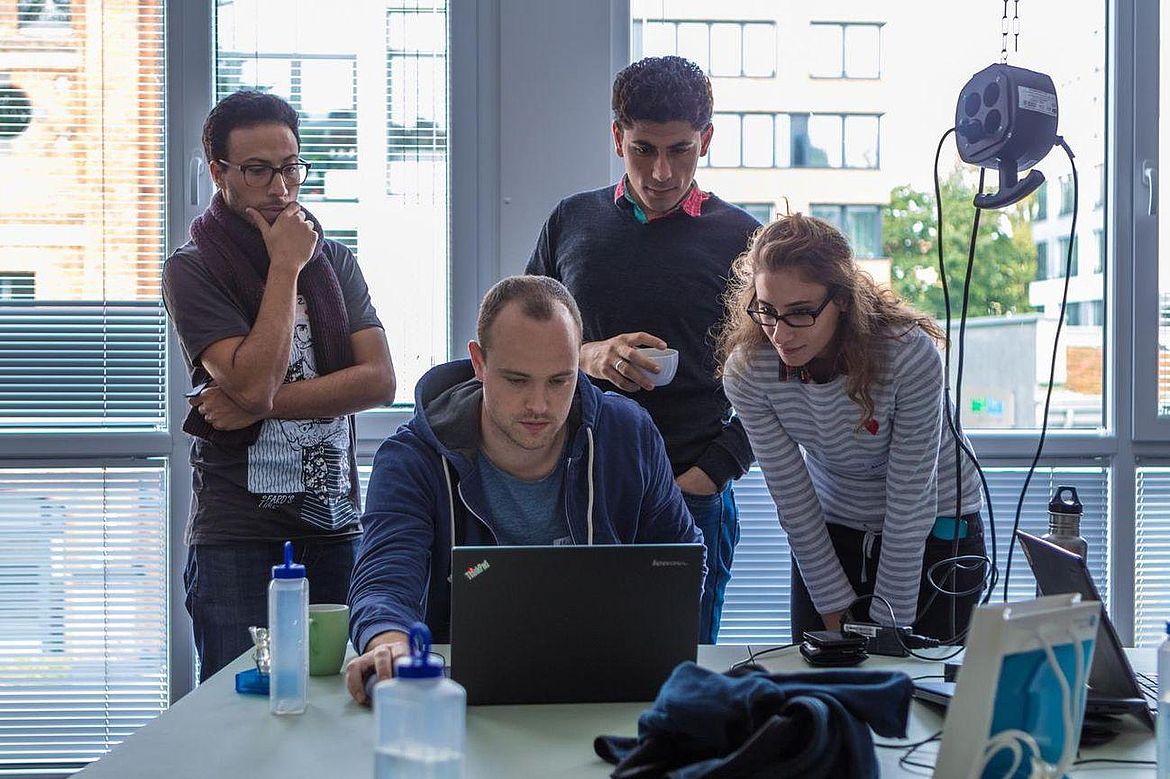Digitalising the Energy System
What are the information and communication technologies necessary to integrate large quantities of renewable energy into our energy system in a smart and efficient way? The WindNODE subprojects demonstrated, among other things, use cases for “iMSys”, the German variety of smart meter technology. We explored how the energy system can act as a matrix for digital value-added services. We investigated how energy data might be a driver for digital value creation and new business models. In addition, we strive to bring some order to the discussion around the grandiose phrase “digitalisation of the energy industry”, for example by differentiating between enabling the optimisation of already existing processes in the industry, and creating all-new value-added services.
Clarifying the use of data in the smart energy system
The digitisation of the energy system leads to a massive increase in data volumes - and to far-reaching questions: how can data security be guaranteed and how do we protect the system against attacks and outages? What standards do we need? Which new stakeholders, roles and services will arise in the field of ICT? And not in the least: how can we put these data to use?
- Standardisation and classification of data: we will first classify incidental and relevant data (e.g. data with/without BSI protection profile, required data from other sectors etc.) and create the required interfaces, protocols and standards.
- Data security and resilience: as part of our ICT networking platform, security and access concepts are developed so that data can be used safely and efficiently. To this end, we also consider the vulnerability and resilience of an increasingly digitised energy system.
- Providing concepts, platforms and tools for data use: which requirements does a networking platform have to meet within a smart energy system – and which centralised or decentralised elements are needed to process energy data? We conduct the conceptual discussion just as we provide concrete platforms and tools, for example with our basic services of the ICT networking platform, the flexibility platform, the anonymisation service, the open data portal as well as the various appropriate data formats for decision-makers.
- Use of data and development of new business models: we deal with the cross-sectoral use of data and look for new, data-driven business models. The open data platform provides anonymised and aggregated data in all transparency. Community meetings (e.g. ‘Hack Days’) and the ‘WindNODE Challenge’ are organised to involve creative individuals and start-ups. The processing and visulisation of larger, more complex data volumes supports decision-makers and informs interested citizens.
Testing concepts for a smart and efficient grid infrastructure
Now that more and more electricity is generated by decentralised units, the operating conditions for the distribution and transmission systems are changing. Controllable loads are developed as flexibility options, sector coupling (e.g. new consumers in the heat and traffic sector) is gaining importance and the participation of different customer types should be enabled. These changes significantly heighten the complexity of the power grids and create new infrastructural and process-related challenges. A secure, efficient and information and communication technology (ICT)-supported grid infrastructure and its interfaces, for instance between the distribution and transmission system operators as well as with the customers and market players, have to be developed further so that they can meet the challenges and demands of the future.
We implement and test technologies for smart system operation, increased customer participation free of discrimination and efficient total system integration:
- Smart metering systems (iMSys) for increased customer participation: we are testing a new generation of meters and combining them with smart and secure control features. Setting up a secure communication infrastructure and testing the functionalities of the bidirectional data transfer are an important basis for this. For the integration of flexible loads and the efficient management of (decentralised) suppliers, installation control systems are also required, in addition to digital measurements. WindNODE prepares and tests a secure control system that is compatible with metering units and tries out incentives for flexible load behaviour. The objective is the non-discriminating use of flexibility while ensuring the security of supply, both regionally and in the overall system.
- Setting up a future-oriented smart grid infrastructure: by using ICT, we increase efficiency and improve the data basis for the energy market, the grids and the energy system. For instance, through the further development of online operational measurements at the low voltage level, we increase the efficiency of operating concepts, grid planning and grid management. At the same time, we provide another building block for the energy market and for an economically optimal adjustment of the grid infrastructure as a whole. We meet the new networking and coordination needs by including an increasing number of decentralised installations to provide ancillary services. This includes studying the future provision of reactive power by renewable energy sources (RES) and the improved involvement of operators of virtual power plants or aggregators in the operating processes and congestion management. We also research stability limits for various operating and expansion scenarios for renewable energy in the WindNODE region.


